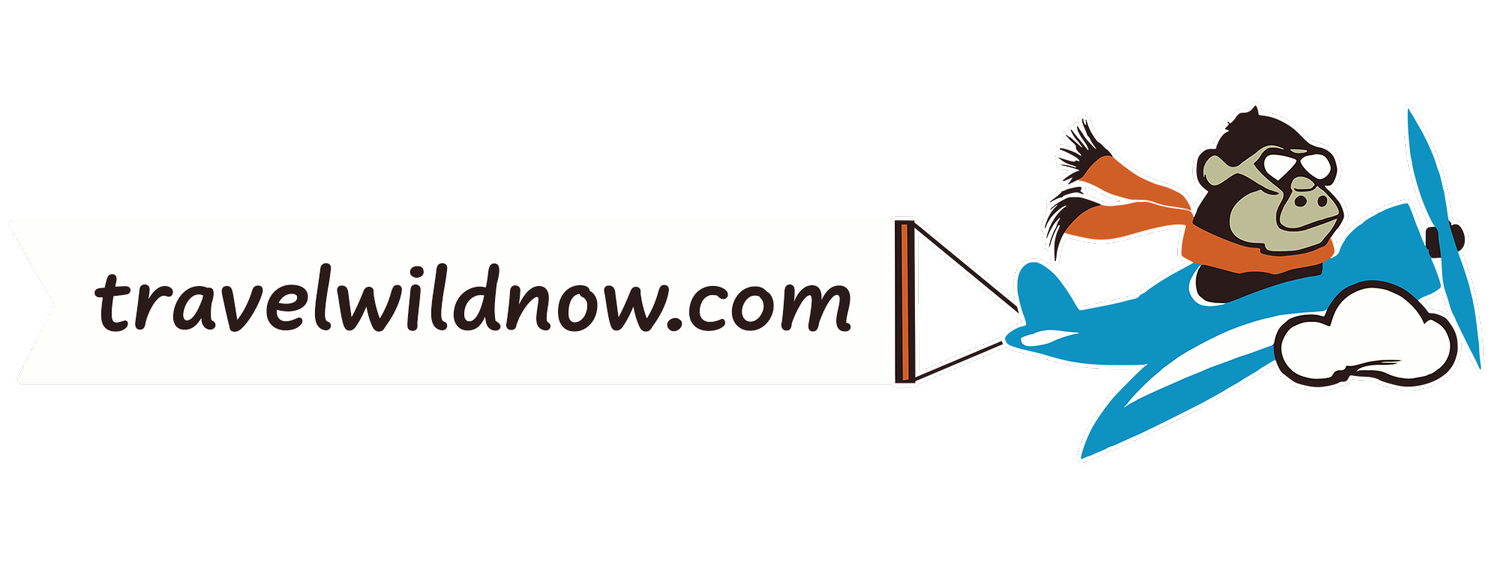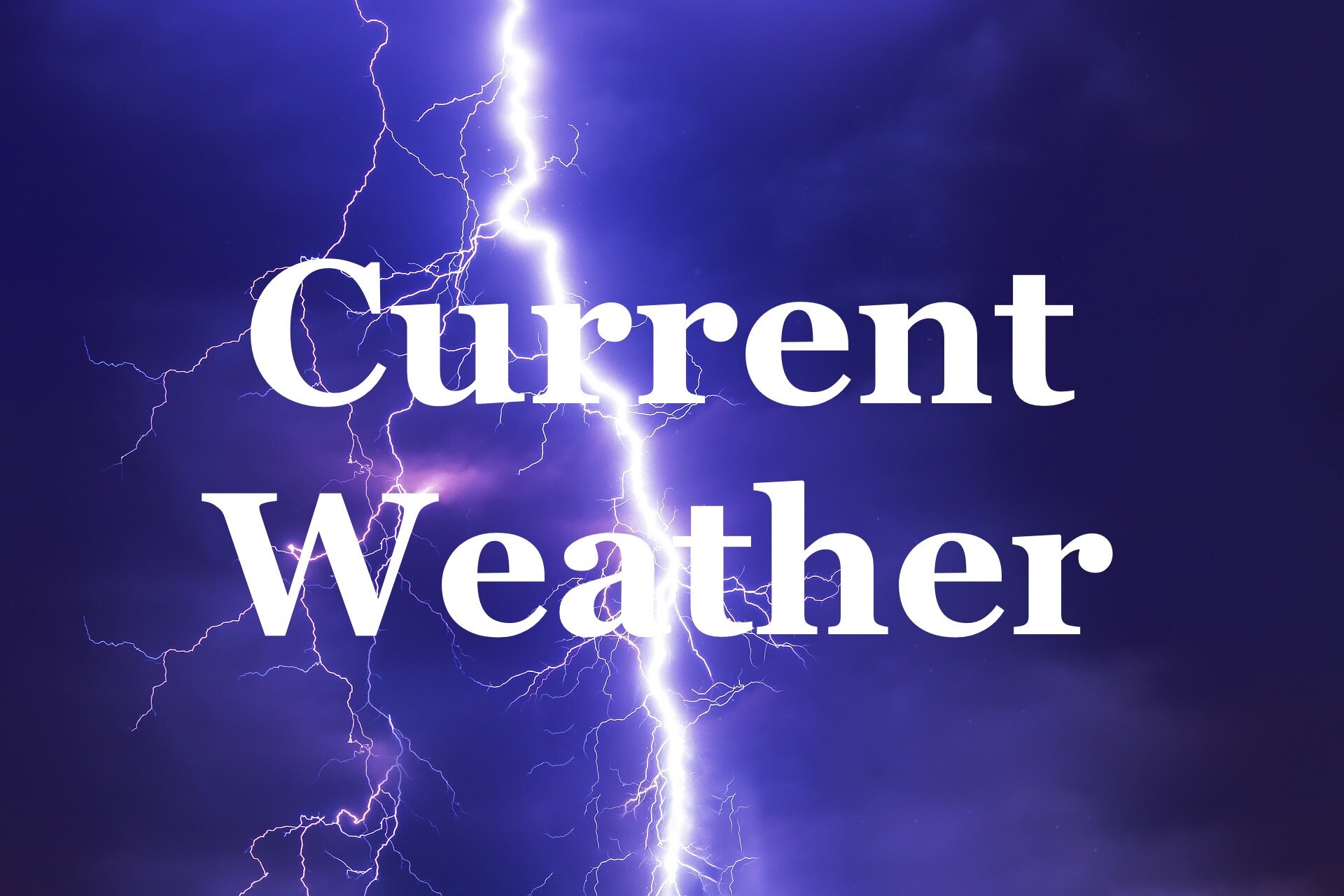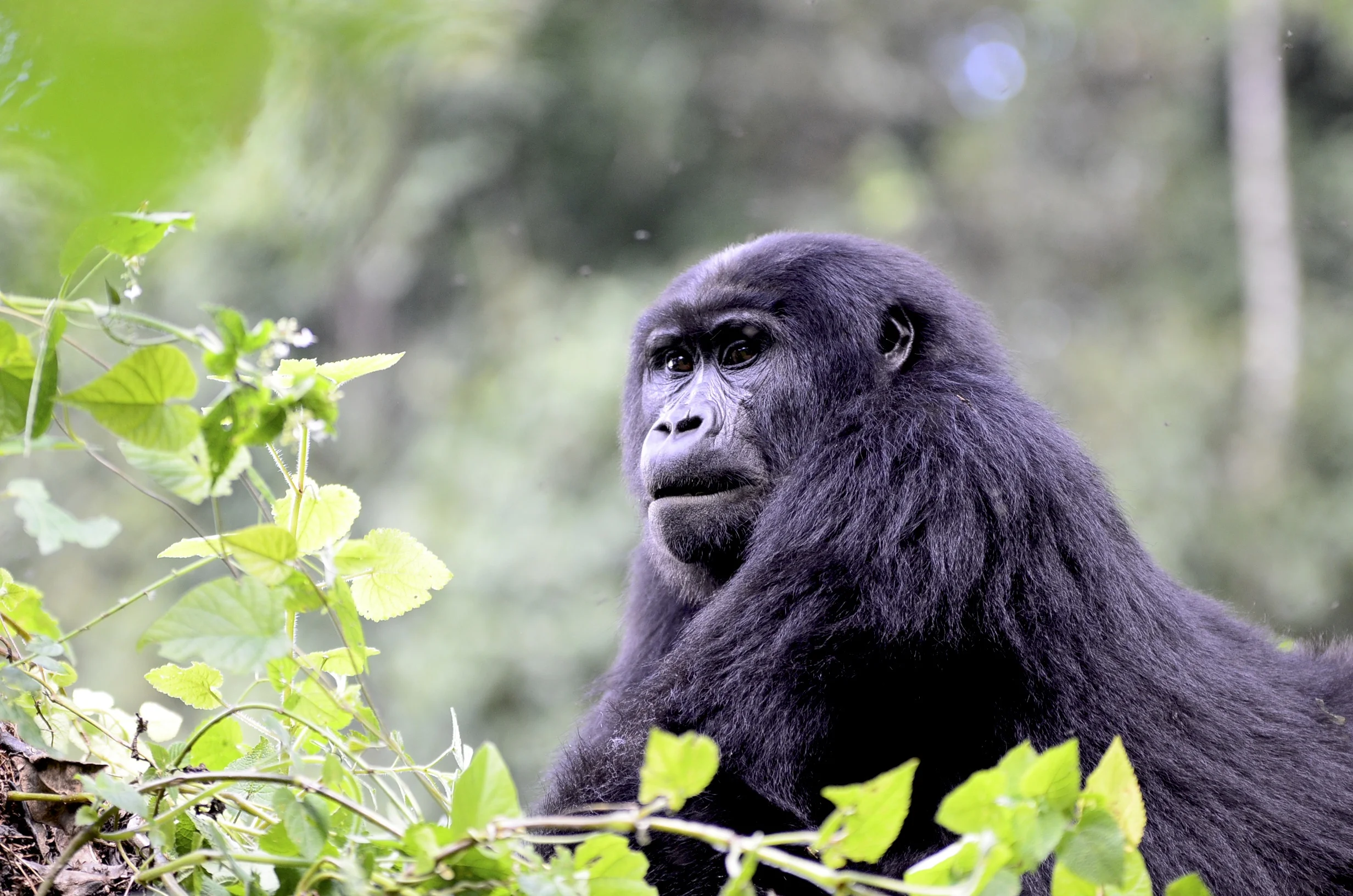
UGANDA 13 Days
This itinerary takes you to one of the most amazing countries in the world. The journey brings you to Uganda’s best National Parks— Murchison Falls, Kibale, Queen Elizabeth, Bwindi, and Lake Mburo National Park(s).
Leading travel company Lonely Planet describes Uganda.... "Uganda packs a lot into one small country. It's home to Africa's tallest mountain range (the Rwenzoris), the source of the Nile, the world's longest river and the continent's largest lake. But the country's most iconic experience is tracking mountain gorillas in their misty habitat. And if you view the Big Five, you'll see that nature – diverse and resplendent – looms large here."
Tips:
Uganda can be challenging to navigate independently, and travelers may encounter various inconveniences.
To make your safari adventure hassle-free, we highly recommend choosing a tour operator rather than organizing everything yourself. We recommend consulting the Bradt Uganda and Lonely Planet Uganda travel guides. These guides provide comprehensive information and recommendations on tour operators that can cater to your needs and ensure a enjoyable safari experience.
The Uganda Wildlife Authority website is an excellent resource of information.
Uganda is a safe country to visit, but opportunistic crimes do occur – just like any other country.
Ensure your camera is always protected by a high-quality, dust-free bag. You will be driving on unpaved roads, dust easily gets into your jeep and may damage your camera.
The itinerary below will provide visitors with an example of the key attractions.
Malaria medication may be required depending on the time of year.
<Kindly note: The Photo Gallery can be found at the bottom of this page>
“Must see” National Parks in Uganda.
-
Gorilla permits must be made at least 6 months in advance.
Travel Insurance is always recommended
It is best to allow the Tour Operator to handle the permit reservation process.
Where are the mountain gorilla found in Uganda?
Mountain Gorillas can only be found in the Virunga mountains in the DRC, Rwanda & Uganda.
Uganda holds 60% of the total mountain gorillas left in the world. They are located in Bwindi Impenetrable National Park.
It is the most popular destination to track the gorillas in Uganda. The forest is a UNESCO World Heritage site and it’s between 1,190 to 2,607 metres (3,904 to 8,553 ft) above sea level.
Gorilla trekking is found in four (4) regions:
Buhoma — is the most popular place for the tourists, on the northern side of the forest.
Flying in and out of Entebbe to Buhoma via the Ishasha airstrop saves you the 10-hour long drive.
Rushaga, Ruhija and Nkuringo — gives you access to many gorillas’ families. However, located farther out on the south side of the forest.
Rushaga - is the furthest of the regions. Rushaga is closer to Kigali,Rwanda (5 hrs.) than to Entebbe (11 hrs).
Ruhija - compared to the other regions Ruhija has the least number of lodging.
Nkuringo - treks are considered more physically challenging and recommended for the most physically fit visitors.
How many Gorilla families are found in Uganda?
There are many gorilla families found in Uganda. Only twenty(20) mountain gorilla families are habituated and open to trekking to the tourists. By habituation, we mean the animals have adapted to human presence. This is a process that takes many years.
A typical day of trekking starts at a designated meeting point around 6:30 AM for a short video and gorilla briefing with the Ugandan Wildlife Authority. Thereafter tourists are divided into groups. Groups consist of no more than eight people. Small numbers are easier to manage and do not overwhelm the gorillas.
Gorilla trekking in Uganda is a year-round activity and permits are issued every day. However, most people prefer to stay dry and travel during Uganda’s dry season which is May through early September and December through February. Visitors are much less likely to experience those rains during the monhs mentioned.
-
Tour operators can be found in the Bradt-Uganda and Lonely Planet Uganda guides.
You should choose an operator that will guide you for the entire trip and customize your itinerary to fit your needs.
Additionally, the local tour operators listed below have a credible reputation. List can change without notice.
<Gorilla Tracking Africa>
<Adventure in The Wild Safaris>
<Wild African Safaris>
<Simba Africa Expeditions><Wild Whispers Africa Safaris>
<MuAfriKa Adventures>
<Brovad Tours Uganda>
<Gorilla Safari Consultant>
-
-
Uganda has Up-market safari lodges, tented camps and hotels all providing world-class accommodations. Rooms have proper beds with mattresses and duvets, en suite (attached, in room) flush toilets, basins and showers with hot and cold running water. Other amenities include mosquito netting, lamps, purified water, insect repellent, flashlights, wardrobes, and ethnic furnishingsItem description.
-
● Breakfast or brunch: You can expect anything from omelets to continental breakfast, typically served with toast, sausage, pastries, cold meat, coffee, and tea. Cereals, fruits, bread, eggs, and cheese are also very common.
● Lunch: Lunches are served picnic style in the middle of your game drive. Sometimes, guides also take you back to the lodge or camp for a hearty meal before going on an afternoon drive. Food is usually composed of sandwiches and fruits.
● High tea: Before setting off to your late afternoon game drive, afternoon snacks may be provided.
● Sundowners: You can enjoy alcoholic beverages basically wine and beer.
● Dinner: Prepared at the lodge or camp, dinner usually consist of three courses: soup, mains, and dessert. Butternut soup and vegetable curry are very common. A variety of meat, fish and pasta dishes served with assorted vegetables and sauces is always available.
● Drinks: Range from from water to coffee and tea to wine and beer. Bottled water is always available.
-
Animal attacks are definitely on people’s mind when travelling to safari areas for the first time or at anytime.
On safari you will, most likely, come into very close proximity to potentially very powerful and dangerous wild creatures.
Serious injury caused by large animals when out on safari is relatively RARE, but it does happen. The chances of being involved in such an incident are around 1 in 80,000, which is very low.
The most dangerous large animals are elephants and hippos.
The highest levels of risk are usually encountered when out on walking safari.
DAY 1
When you arrive at Entebbe airport, your guide will meet you and take you to your lodging.
On your adventure you can enjoy the scenery, go on thrilling game drives, take boat safaris, and meet friendly locals.
Entebbe, home to the airport, is known for a 1976 incident when militants hijacked an Air France plane and held 100 hostages.
Overnight: Entebbe, <where to stay>
DAY 2
Your journey will take you to Murchison Falls National Park located in northwest Uganda. This wildlife reserve is known for its namesake attraction, Murchison Falls, where the Nile River flows through a narrow gap and drops dramatically.
The park consists mainly of savanna, woodland, and wetlands, offering varied habitats for many animal species.
Paraa is within Murchison Falls Park where all access roads meet, making it the main starting point for visitors. <Route>
📌 Most park activities—lodges, game drives, boat trips, and walks—
also start from Paraa.Paraa is Uganda’s largest wildlife reserve, where visitors can see many animals in their natural habitat.
Diversion: On your way to Paraa, it's recommended that you make a quick stop at Ziwa Rhino Sanctuary.
It's the only place in Uganda where you can see rhinos in the wild, making it a unique and worthwhile experience.
Overnight: Paraa accommodations, (3 nights)
Paraa Safari Lodge - highly recommended for its amenities and closeness to the park's tourist area.
Distance:
Entebbe ---> Ziwa Rhino Sanctuary, 3.5 hrs.
Ziwa Rhino Sanctuary.---> Paraa, 3 hrs.
DAY 3
Explore Murchison Fall National Park, along with a boat ride to the Falls.
The highlight is visiting “Murchison Falls” a point along the Nile, where the Nile River forces its way through a narrow gorge 8 meters wide.
In addition, hiking trails are available at the Falls.
Game drives:
What is a game drive? A game drive is an adventure that entails viewing wildlife in the comfort of a 4×4 open-sided safari vehicle that accommodates 4 to 8 people, a sure way to give you that classical safari feeling.
Each game drive takes around 3 hours. Expect to see elephant, buffalo, giraffe, many exotic birds and more.
Morning game drive begin at 6-6:30 am.
Afternoon game drive begin at 2-3 pm.
Evening drive start at 7 pm.
Overnight: Paraa
The boat leaves Paraa to the Albert delta. Here you have a chance of spotting the rare Shoebill. The delta forms a shallow area that is important for water birds, especially the shoebill, pelicans, darters and various heron species.
DAY 4
The day begins with a lively boat ride on the Nile River toward Lake Albert.
Trips usually last five (5) hours. You will see an abundant amount of birds and wildlife including hippos and crocodiles.
Later enjoy a afternoon game drive in the Paraa region.
Overnight: Paraa
DAY 5
Depart to Kibale Forest to trek the chimpanzees.
The scenic drive lets you see different towns and witness their local culture.
—As you journey from town to town, take in the breathtaking sights, such as the stunning views of Lake Albert and the majestic Rwenzori Mountains. Notably, the Rwenzori Mountains boast six(6) of Africa's ten tallest peaks.
Overnight: Fort Portal. (2 nights)
Distance: Paraa ---> Fort Portal, 8.5 hrs./ 380 km.
The local village with a special treat performing for the the tourists that come by frequently.
DAY 6
Kibale Forest, situated within Kibale National Park is a evergreen forest known for its rich variety of primates. <location>
Chimpanzees, our closest animal relatives, are the best known. A chimp trek in Kibale Forest is a must-do, highly rewarding experience.
The guided Chimp Trek takes 5 to 6 hours. Sometimes you will see many chimpanzees and sometimes a few. The Chimp trek is fast paced due to the constant movement of the chimpanzees. Being physically fit helps you keep up with the chimps.
Review the Trekking information before you go.
⚠️ Book ahead for peak season—your tour operator will arrange the reservation.
Overnight: Fort Portal.
DAY 7
Travel to Queen Elizabeth National Park. <map> Arrive by early afternoon.
Queen Elizabeth Park is Uganda’s most famous. Its lakes, wide savanna, forests, and lush swamps make it great for seeing big animals. Visitors
also enjoy its wildlife, cultural history, and can visit nearby villages to
hear local music and see traditional dances.
Overnight: Queen Elizabeth Park. (2 nights), Mweya Safari Lodge suggested.
Distance: Fort Portal ---> Queen Elizabeth Park, 2.5 hrs.
DAY 8
A thrilling day in Queen Elizabeth Park including game drives.
A excellent boat cruise is offered and takes 2 to 3 hours while traversing the waters. The boat trip is done on the impressive Kazinga Channel a 40 km water long natural channel.
Overnight: Queen Elizabeth Park.
DAY 9
Queen Elizabeth Park, more highlights:
Explore Kyambura Gorge for one more opportunity to trek the chimpanzees. (Trek lasts 3-4 hrs.)
—The Kyambura Gorge is a great place to see chimps trekking. You can watch them move through the forest, jumping from tree to tree.
Afterwards, continue your journey to the Ishasha Sector. See Uganda's rare tree-climbing lions in Ishasha, a must-visit spot. Enjoy a quiet, less-crowded place and the beauty of nature on evening game drives.
Overnight: Ishasha Wilderness camp is recommended.
Distance:
Queen Elizabeth Park ---> Ishasha camp, 4 hrs.
DAY 10
Journey to Bwindi National Park (Gorilla Trekking).
A lengthy day, with drive time of 7 to 8 hrs. <Learn more>
The scenic route to Bwindi National Park is often referred as the
"Switzerland of Africa". You will pass through mountains, green hills, lakes with cultivated terraces, tea farms, bamboo forest and tropical rainforest.Gorilla permits must be made at least 6 months in advance.
It is best to allow the Tour operator to handle the reservation process.
Overnight: Bwindi area. (2 nights)
Distance: Ishasha ---> Bwindi Park, 7 hrs.
DAY 11 — The Day of the BWINDI GORILLA TRACKING.
Early morning check-in and briefing.
The guided trek can be short ( 1 hr. ) or long (5 hrs.) before the gorillas are spotted.
Good physical condition is recommended.
You will spend one (1) hour maximum with the Gorillas.
Best time to visit the gorillas is during the country's two dry seasons: December through February and from June to August.
WHAT TO PACK FOR THE GORILLA TREK:
GAITERS - very useful if you step on a safari ant colony by mistake. These ants can quickly climb your legs. We suggest wearing gaiters over your pants. <Where to buy>
BOOTS – a good pair of hiking boots from an outdoor store is important/essential.
GLOVES – during the trek, you may hold trees, branches, and vines, which can scratch your hands. Many trees have thorns. Bring sturdy gardening gloves.
LIGHT RAIN JACKET – Bwindi is a tropical rainforest with rain likely almost every day. Bring a light poncho or rain jacket that you can easily carry and use when needed.
ENERGY SNACKS – the trek to the mountain gorillas can be tough. Energy snacks like nuts, dried fruit, chocolate or power bars are a great idea.
WATER - use water bottles while you’re in Uganda. You’ll need to drink a lot of water during the trek.
LONG PANTS AND LONG SLEEVE SHIRT– avoid showing too much skin during the jungle trek and tuck your pants into your socks. Watch out for safari ants.
INSECT REPELLENT a must.
DAY 12
Depart to Lake Mburo National Park. <Map>
The park is near Kampala and easy to reach. Visitors can enjoy boat rides on Lake Mburo, game drives, and bird watching.
What makes Lake Mburo Park unique is that it is the only national park in Uganda where you can see Impalas, as well as Zebras, which are also found in the remote Kidepo Valley.
Hop on a Boat Cruise - you will find hippos, crocodiles and otters in the lake.
Horse riding safari - a different and unique way of seeing the animals.
Overnight: Mihingo Lodge recommended.
Distance: Bwindi ---> Lake Mburo. 6 hrs.
DAY 13
Depart to Entebbe for your flight home.
During your journey, make a stop at Masaka to take a memorable photo at the Equator.
When you get to Entebbe, you can either take your evening flight home or stay overnight and leave the next day.
Overnight: depends on your flight schedule.
Distance: Lake Mburo ---> Entebbe, 4 to 5 hrs.
Average cost:
(EXCLUDING AIRFARE)
$$$ USD per person:
Budget: $4,200
Moderate: $5,200
Luxury: $6,800 +
🌤️. Climate
Most rainfall (rainy season) is seen in March, April, May and November.
The warmest month is January.
The coolest months are July and August.
April is the wettest month.
December, July and August are best times to visit the Gorillas.
Uganda Gallery
🎬 Video



















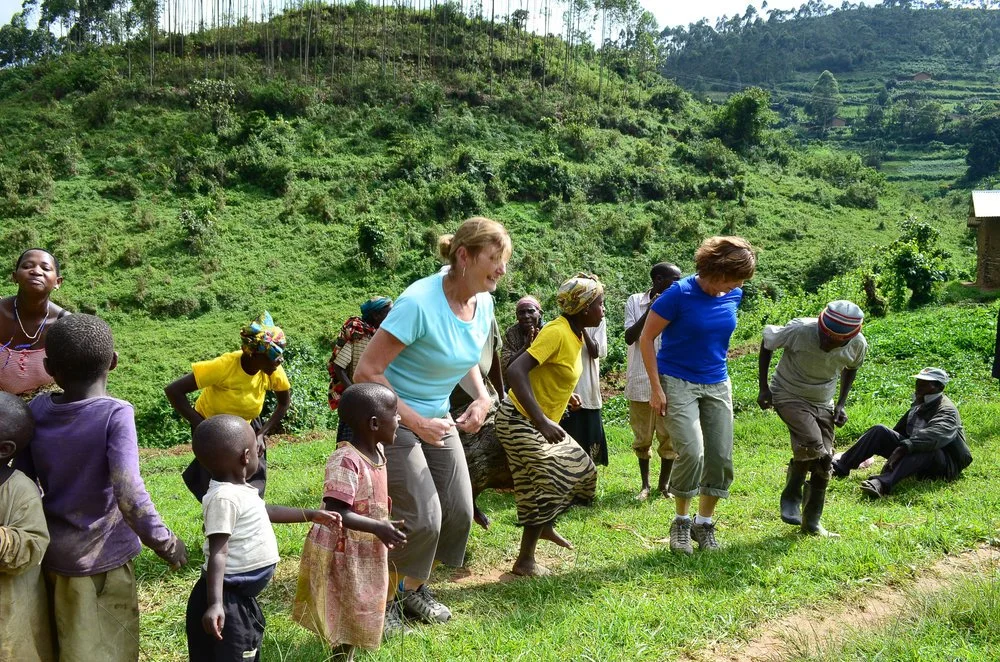















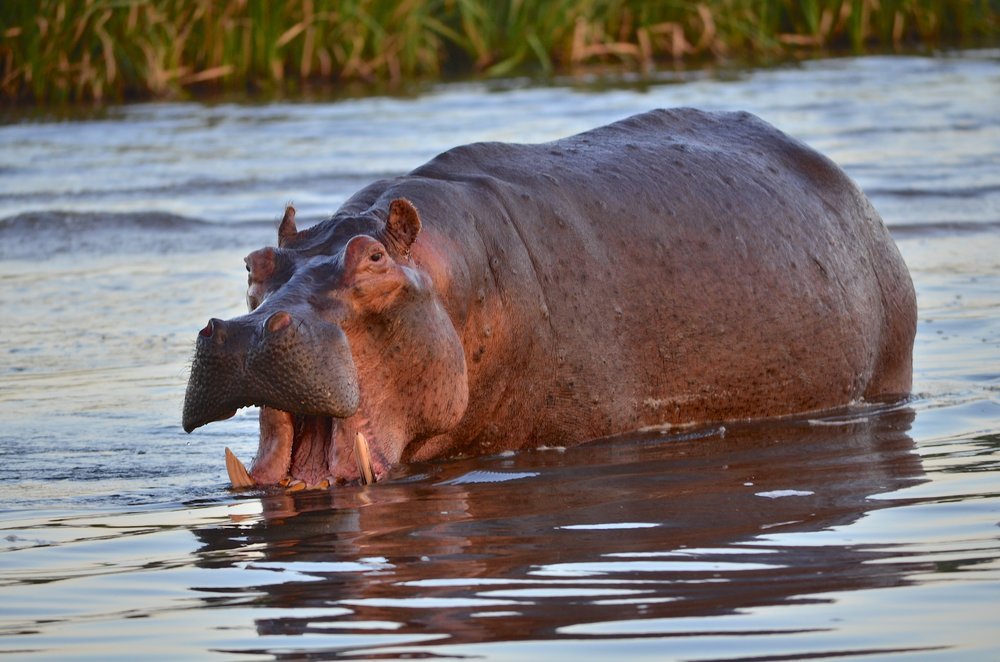














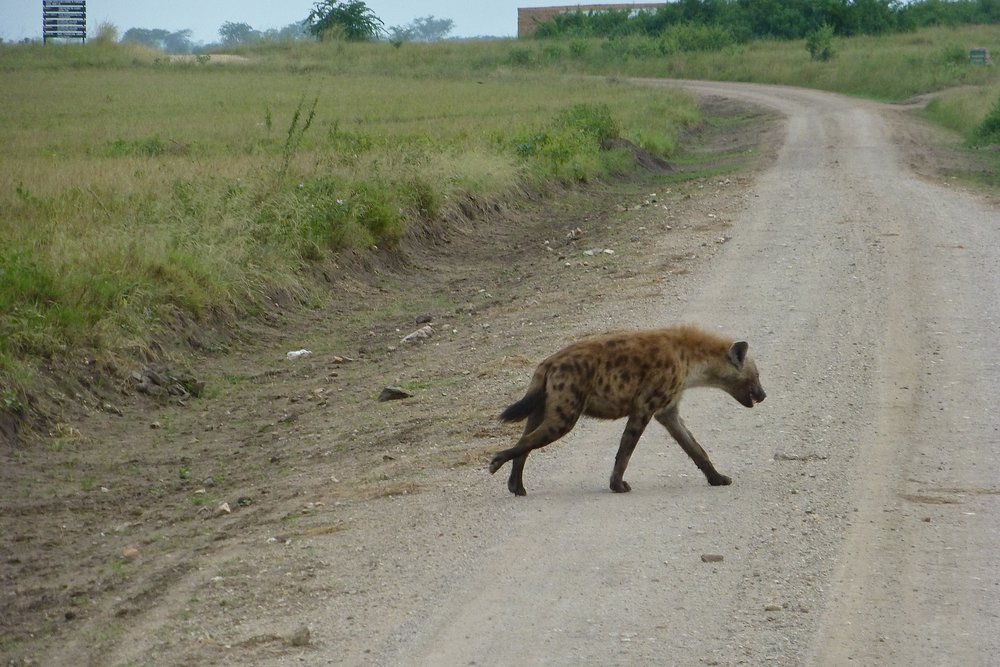










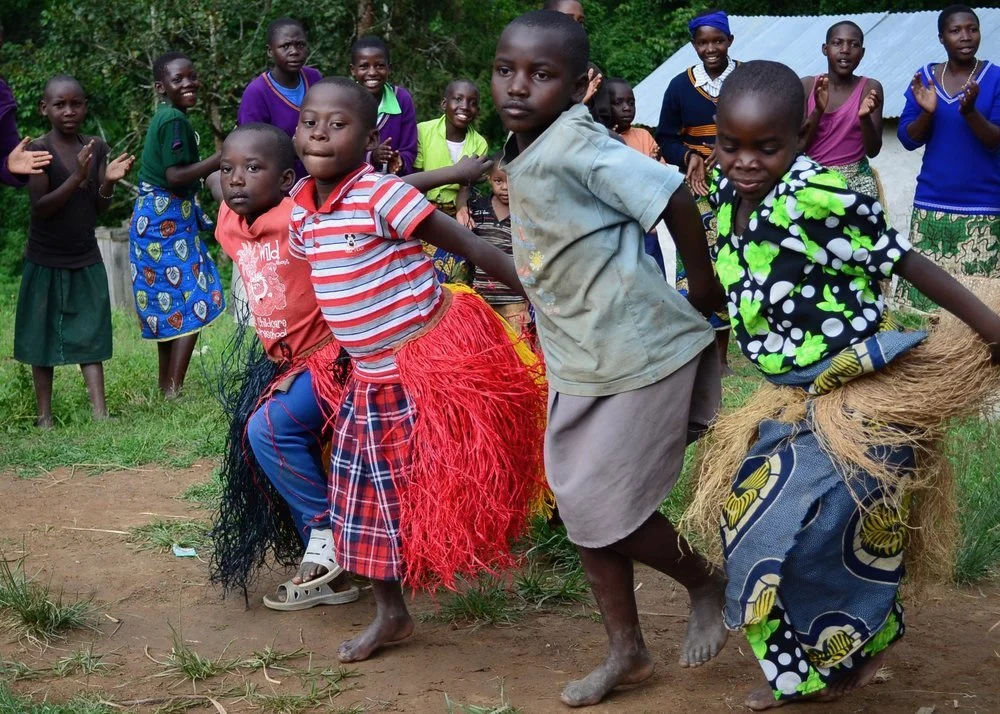



sources: global travel publishers, wikipedia.org, safari bookings.comNo copyright infringement is intended on this website by travelwildnow.com